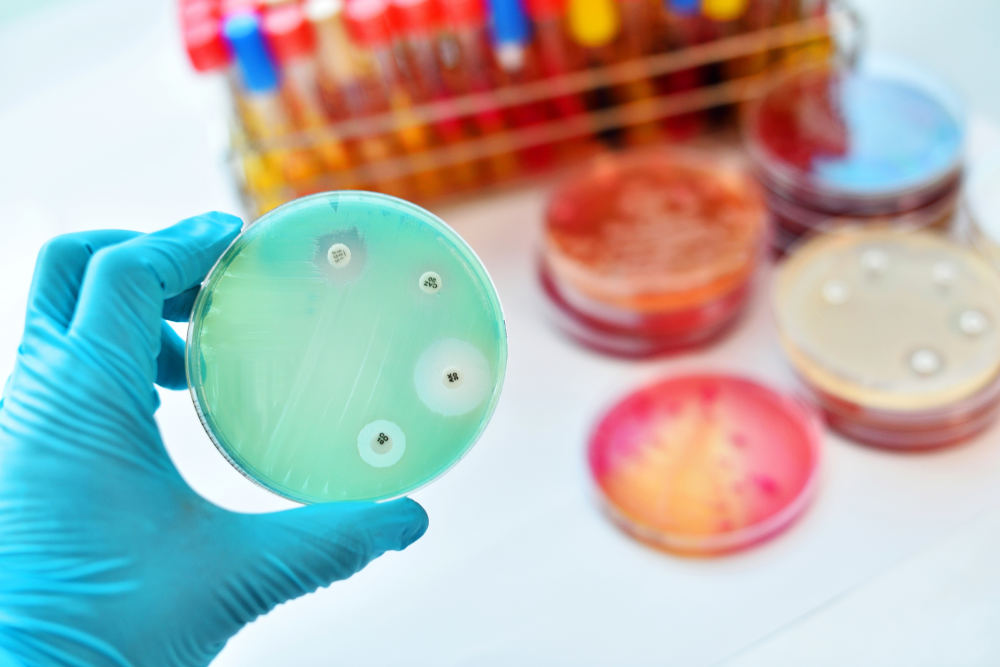-
The Role of Graphene in Fighting Antimicrobial-Resistant Bacteria
Feb 28, 2020 | ACS MATERIAL LLCFor more than 70 years, antibiotics have been used successfully to treat patients with a variety of bacterial diseases, but this flood of antibiotic usage has had one very significant unintended consequence: bacteria have evolved to become increasingly resistant to antibiotics. Antibiotic-resistant bacteria are proving to be a serious, growing global health threat. In addition, it’s important to note that recent years have seen no significant advances in antibiotics. In summary, the world has a limited number of antibiotics and the number of bacteria that are resistant to this arsenal is growing. The result: deaths over the next 35 years from antimicrobial drug resistance are projected to be in the range of 300 million people worldwide.
These quick facts about the impact of drug-resistant bacteria in the US are a sample of similar effects being felt around the world:
- A number of common infectious diseases are difficult to treat as a result of drug resistance, including staphylococcal infections, tuberculosis, influenza, HIV infections, gonorrhea, candida infections, and malaria.
- 5 to 10% of hospital patients in a given year will develop an infection and about 90,000 of these will die as a result.
- The CDC estimates that antibiotic resistance in the United States costs about $20 billion annually in health care expenditures and $35 billion in other related costs, and results in more than 8 million additional hospital days.
- Antimicrobial-resistant infections result in longer hospital stays and more complicated treatments.

To counteract this potential catastrophe, it’s critical to explore alternative antibacterial agents.
Nanomaterials
Recent discoveries have put nanomaterials at the top of the antimicrobial alternatives list. Nanomaterials are loosely defined as materials with external or internal dimensions in the nanoscale, approximately 1-100 nm. Researchers have learned that many nanomaterials demonstrate antibacterial properties. One of the most widely studied antimicrobial nanomaterials is graphene oxide (GO).
Standard antibiotics neutralize bacteria in three ways:
- Preventing the bacteria from developing new cells
- Damaging the bacteria’s DNA
- Causing the bacteria’s cells to break
Graphene oxide has a unique two-dimensional honeycombed lattice with a hydrophobic plane structure consisting of hydrophilic groups, including carboxylic (-COOH) and hydroxyl (-OH) groups along its edge. GO’s antibacterial properties are thought to come from the ability of these sharp edges to adversely affect bacterial membranes. This combined with oxidative stress induction triggers a cascade of toxic events for bacterial cells. While the exact nature of this process is still a matter for study, the important takeaways for now are first, that nanomaterials do interfere with and even kill bacteria, and second, that their cytotoxicity is unique, making them a potentially powerful alternative to traditional antibiotics.
The Possibilities
Researchers at the Laboratory of Physical Biology at the Shanghai Institute of Applied Physics are just one of the multitude of scientists studying the antibacterial effects of nanomaterials, specifically graphene oxide. The team created a single layer nanosheet of graphene oxide and synthesized a sheet of flexible paper with a thickness of between 1.5 and 4.6 µm. They then measured the antibacterial activity of the graphene oxide sheet in the presence of E. coli cells. They discovered that graphene oxide almost completely suppressed the growth of E. coli, reducing total viability by up to 98.5%. They also observed that the E. coli cells largely lost their cellular integrity; cell membranes were severely damaged and the cytoplasm spewed out. Oxidative stress, physical disruption of the membrane, or a combination of the two is thought to be the cause.
The Future
With results like that, it’s not hard to understand why nanomaterials such as graphene oxide are at the forefront of research into new antibacterial agents. ACS Material supplies graphene oxide on SiO2 and graphene oxide dispersions to leading universities and R&D labs around the world who are searching for new ways to fight disease. To buy graphene oxide, contact us today.